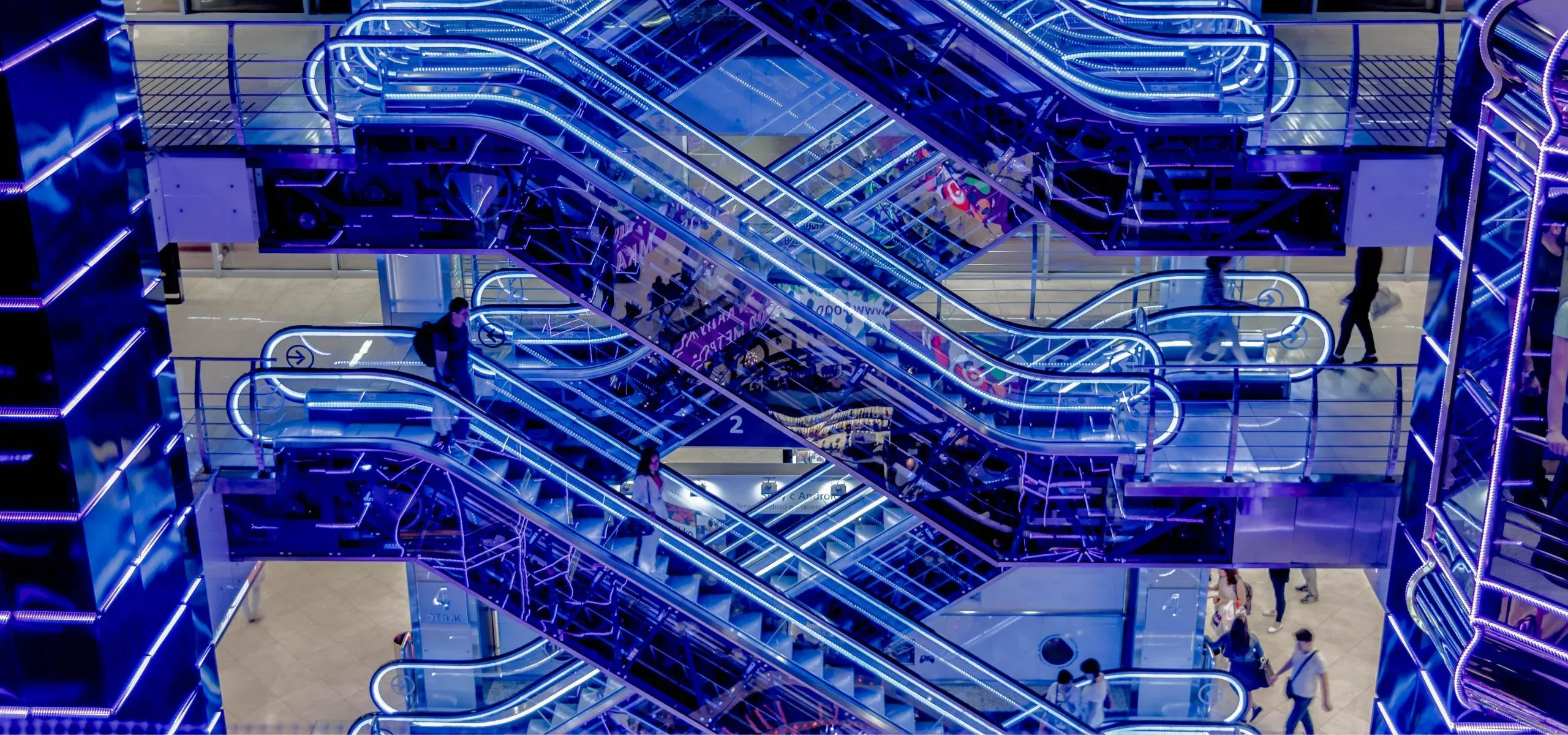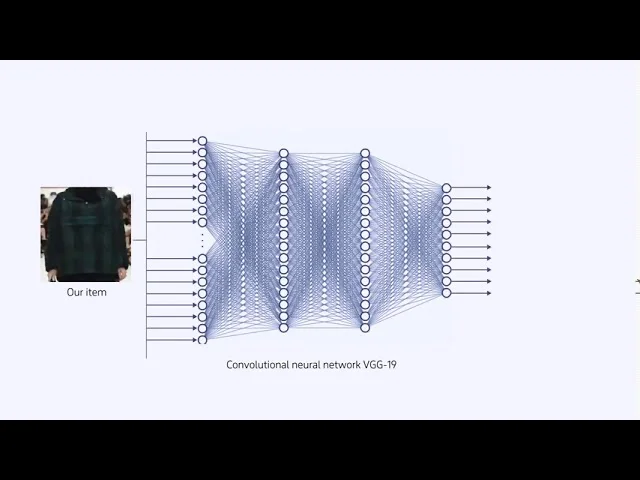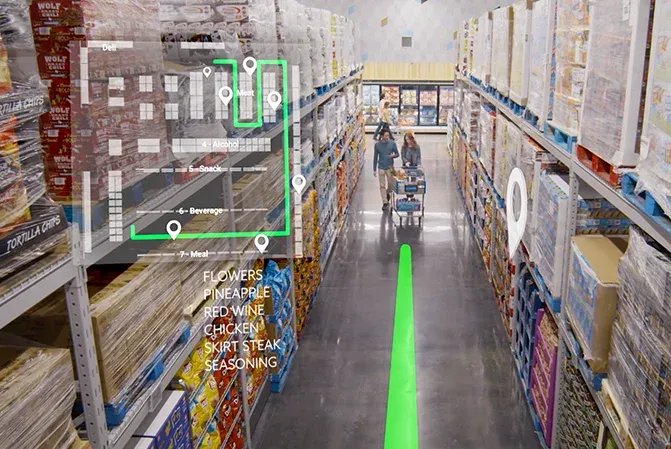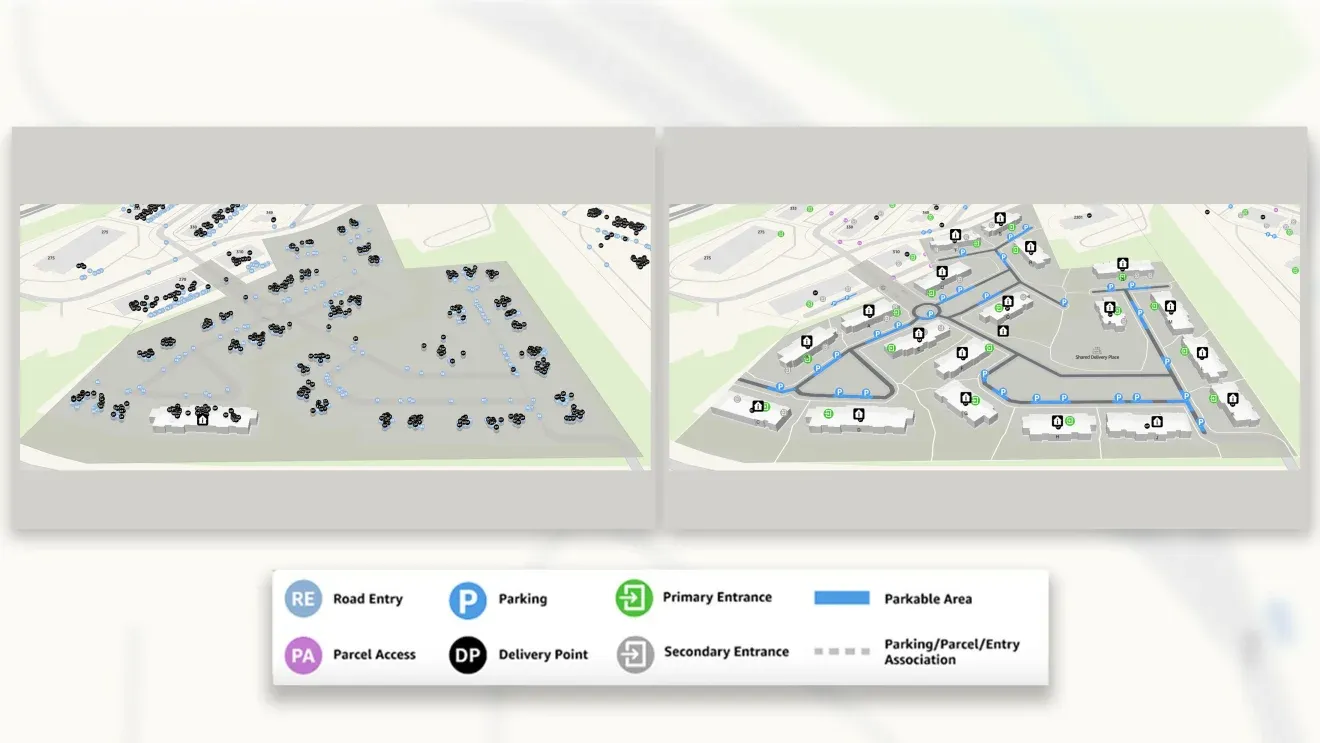Services
SERVICES
SOLUTIONS
TECHNOLOGIES
Industries
Insights
TRENDING TOPICS
INDUSTRY-RELATED TOPICS
OUR EXPERTS

September 23, 2025
the annual profit growth of retailers that used AI and machine learning
Statista
bn
the expected increase in annual revenue for retailers adopting generative AI
McKinsey
an estimated reduction in customer service costs thanks to GenAI-based conversational commerce
BCG
ML systems for customer segmentation analyze personal data on users and visitors collected from social
media, websites, or ecommerce platforms to split the audience into multiple segments based on shared
characteristics. These solutions can analyze various attributes, such as behavioral (time on site, bounce
rate, purchase patterns, etc.), demographic (age, gender, etc.), psychographic (interests, lifestyle,
etc.), and geographic (city, region, etc.). After defining certain patterns or dependencies, such as a
brand's popularity among a specific age group, the ML solution can predict customer interests and attitude
towards certain products to target specific buyer personas with fully personalized ads and communications.
Nowadays, ML-powered marketing tools and CRM
solutions, such as Salesforce, provide retailers with
segmentation and targeting functionalities. For instance, Salesforce adopters can use Data Cloud to gather
customer data from Instagram, Shopify, or other platforms and optimize their marketing campaigns for
specific audience segments based on AI-generated recommendations.

ML-powered recommendation engines serve as a digital counterpart to human sales assistants, providing
personalized recommendations to help customers navigate the vast product catalogs of modern ecommerce
platforms. First, a recommender engine analyzes personal data and consumer behavior (past purchases,
browsing history, product reviews, etc.), along with product information and contextual parameters, such
as broader sales trends. The system can then recommend items already purchased by other customers with
similar attributes and buying patterns (collaborative filtering), offer items similar to those already
bought by the customer (content-based filtering), or combine both mechanisms (hybrid approach).
Amazon’s engine is one of the most advanced recommender systems. The solution has recently been enhanced
with generative AI and large language models to further personalize the descriptions of each recommended
product based on customer preferences, highlighting the features that can be more relevant to a certain
user.

Image title: Amazon’s product recommendations with personalized descriptions
Image source: Amazon
Unlike traditional search engines that match keywords in search queries with those in product
descriptions, contextual search solutions powered by ML and Generative AI, including natural language
processing or NLP, can understand user intent behind a query based on contextual factors and consequently
provide more relevant results. Such factors can include user location, time of the day, or search and
purchase history. ML-enabled semantic search engines consider contextual clues, as well as the
relationships between words, phrases, and concepts to better interpret synonyms, ambiguous terms, or other
implications. For instance, they can list running shoes for queries containing “athletic footwear”, or
prioritize affordable laptop models for students. A good example of this is the US department store chain
Macy’s, which adopted Google Cloud for Retail to provide online store visitors with contextually relevant
search results.
Computer vision-powered visual search solutions enable customers to use a
product image, either uploaded or captured live with a camera, as a search query to find visually similar
items available on a retail website. Major retailers have already integrated this technology into their
online platforms, including Amazon, H&M, and IKEA.

Image title: IKEA’s visual search feature
Image source: IKEA
Many retail businesses rely on conversational AI to automate and scale their sales and service operations, while providing customers with fully personalized
shopping experiences and round-the-clock assistance. Originally designed as distinct types of solutions, the
most advanced AI chatbots and virtual shopping assistants powered by GenAI now boast a broad and nearly overlapping range of capabilities, making them valuable across
multiple functions. For instance, they can provide ecommerce website visitors with personalized recommendations
based on recommender engines’ output, send reminders to facilitate shopping cart recovery, and gather customer
feedback on new products. Additionally, conversational AI is a key enabler of voice commerce, allowing customers to shop for products using voice commands rather than typing their requests and
scrolling endless pages. Furthermore, these tools can automate a variety of customer support activities,
from providing order status updates to assisting buyers with product returns.
ThredUp, a major
online resale platform specializing in secondhand clothing, has recently incorporated an AI-powered bot
named Style Chat into its website. The chatbot provides personalized outfit suggestions based on visitors'
prompts, such as suitable outfit options for a summer wedding.

Image title: ThredUp’s Style Chat interface
Image source: ThredUp
To predict the impact of demand fluctuations and suggest price changes which maximize profit while
minimizing the risk of churn, machine learning systems can take into account multiple parameters that
would be difficult to track manually. For example, they can search the web for prices of similar products
offered by competitors, promotional initiatives in place, and the pricing history of particular products,
or consider broader market trends and their underlying drivers such as product demand compared to supply.
These AI-driven tools can also identify the lowest-priced items in their respective categories to help
retailers set up a markdown pricing strategy and get rid of obsolete merchandise at the end of a season.
While Amazon and other ecommerce platforms have pioneered this approach, dynamic pricing is now
gaining traction among traditional brick-and-mortar businesses, with chains like Best Buy and Kroger
adopting electronic tags to display and adjust prices in real time.

Some social media platforms incorporate contextual commerce features powered by machine learning
algorithms to recognize products in online content and highlight them with image overlays, enabling users
to purchase them with a simple click.
The shoppable media technology company AiBUY, for
instance, built a video ecommerce platform
with product recognition capabilities powered by neural networks. When the system detects an item within an
uploaded video, it compares it to merchandise available in partners’ online catalogs to identify the closest
match, allowing viewers to quickly reach the corresponding product page via an embedded link.

Stockouts and overstocks cost retail companies billions of dollars a year worldwide. To optimize their
inventory levels and better balance product supply and demand, many retail businesses are turning to predictive analytics systems powered by ML algorithms. Such tools can forecast demand trends based on factors like seasonality, holidays,
pricing, and promotions. Combined with computer vision-powered cameras, predictive analytics software can complement
information from digital sources (social media, ecommerce platforms, etc.) with data points collected in physical
stores, such as foot traffic patterns. This helps retailers better assess which products are capturing customers'
attention and fine-tune their inventory restocking plans and product placement strategies accordingly.
For instance, Walmart adopted a ML-powered inventory management system that can analyze historical
sales data from both physical and digital channels to forecast future demand, helping adjust stock levels
across distribution centers and stores. The solution also considers macroeconomic trends, local
demographics, macroweather patterns, and in-store customer interactions to provide more accurate
predictions.

Image title: Walmart’s in-store customer behavior analysis
Image source: Walmart
Delivery is another key aspect of supply chain management that can be enhanced with machine learning
technology. For example, ML-based software can factor in customer preferences, including same-day
delivery, or cross-check those preferences with driver and vehicle availability to recommend the best
shipping options and optimize delivery schedules accordingly. These systems can also be used to
dynamically adjust routes according to traffic conditions or to predict sales trends by geographic area
and thus store popular items in the right warehouse, minimizing transportation times.
When it
comes to optimizing deliveries with AI, Amazon is probably the first example that comes to mind. A decade
ago, the company patented an anticipatory shipping system that uses ML algorithms to predict customers'
future orders based on past purchases, wish lists, and other factors. This enables Amazon to send products
to a closer hub before customers actually purchase them, making deliveries faster and cheaper. More
recently, Amazon implemented Wellspring, a generative AI-based mapping system that combines data from
satellite imagery, previous deliveries, or other sources to create more accurate maps for its drivers than
those available on navigation apps. For instance, the solution can specify the location of an apartment in
a multi-building complex and recommend the best access point.

Image title: Amazon’s GenAI-powered mapping solution
Image source: Amazon
Cashierless stores represent one of the most promising, yet controversial, fields of applications of ML
and artificial intelligence in retail. Transforming stores into smart retail locations, where customers
can shop without having to interact with a cashier seems to be beneficial for both retailers and
consumers. Instead of traditional checkout lines, these stores utilize AI technologies such as ML-powered
computer vision solutions to automatically track purchases and process payments. Specifically, ML systems
can monitor customers picking items from shelves, identify products and add them to the respective digital
carts, and charge shoppers as they leave the store.
When adopted in small retail environments,
cashierless technology has proven rather effective. For instance, Poland’s largest convenience store chain
Żabka has expanded its service offering with 24/7 cashier-free minimarkets called Żabka Nano, enabling
customers to complete their grocery shopping in an average of 60 seconds. So far, however, not all
implementations have gone as planned. Amazon has recently scaled back its cashierless grocery store chain
Amazon Go and discontinued the “Just Walk Out” technology at its largest Amazon Fresh supermarkets, amid
accusations of hiding the true extent of human intervention in its ML-based operations

ML-powered fraud detection systems enable retailers
to identify anomalous customer behavior, which can indicate criminal activity, and thus prevent unauthorized
transactions. For example, a machine learning solution can spot a sudden increase in the frequency of credit
card payments, particularly for luxury goods, which is a common sign of credit card fraud. It can also spot
suspicious login events, such as from an unusual IP address, to detect account takeover. Major online retail
platforms like eBay and Alibaba have been using this technology for years, with a growing focus on deep learning
and neural networks.
ML-enhanced video surveillance takes a similar approach, using anomaly detection to identify unconventional movement patterns. Japanese tech company Vaak, for instance, built an AI solution
designed to catch shoplifters in action and alert store managers. To maximize detection accuracy, Vaak's team
fed machine learning algorithms with 100,000 hours of surveillance data portraying over 100 behavioral aspects,
including hand movements, facial expressions, gait, and clothing choices.

Here are some of the most notable payoffs retail companies can expect from implementing machine learning in their operations:
Tailoring each buyer’s journey and connecting users to their favorite merchandise through ML-driven customer segmentation, targeted ads, recommender systems, and advanced search engines.
Delivering more interactive and enticing shopping experiences with AI chatbots, virtual assistants, and contextual commerce features to boost customer satisfaction.
Deriving valuable insights from market and customer data to predict future trends, such as demand or sales, and make informed decisions about marketing initiatives, pricing strategies, and other key business aspects.
Fostering lead conversion and maximizing customer retention and lifetime value via personalized recommendations and dynamic pricing.
Streamlining key retail operations, such as inventory management through demand forecasting and product delivery via dynamic routing, and automating clerical tasks with chatbots and virtual assistants.
Ensuring safer digital transactions via ML-based fraud detection, as well as in-store security through computer vision-powered video surveillance.
The data-driven nature of machine learning makes this technology very powerful, but also complex to implement. Here are some aspects worth considering for seamless ML adoption.
Concerns | Recommendations | |
|---|---|---|
Maximizing ML software accuracy & performance |
While ML solutions generally outperform traditional technologies (such as rule-based chatbots and fraud
detection systems) when it comes to automating workflows or providing analyses and predictions, their
output still can be inaccurate and biased. For instance, if you train a recommendation system with
datasets that overrepresent a certain customer segment, the engine can disproportionately suggest products
catering to that segment and neglect the preferences of other groups.
|
|
Ensuring data privacy, security & compliance |
ML-powered retail solutions typically collect, store, and process large volumes of data, including
sensitive information like credit card numbers and other transaction details. This can cause concerns
among users and authorities, as well as make such solutions an ideal target for cybercriminals.
|
|
Itransition provides comprehensive ML services and solutions to help retailers enhance their decision-making capabilities and maximize operational efficiency.

Our team develops ML solutions that combine excellent performance and usability, taking care of data preparation and model training, front-end and back-end development, software integration, and post-launch support.
We offer expert guidance throughout the ML implementation process, assisting with business needs analysis, solution design, project planning and supervision, and user onboarding to make sure the resulting system fully meets your expectations.
With the progressive shift to digital commerce, retailers are adapting their operations and encountering new
challenges, ranging from complex supply chains and a more diverse audience to emerging cyber threats.
Machine learning is one of the technological advancements that has proven essential to addressing these
issues, helping retail companies optimize their processes and meet customer expectations. Partnering with an
experienced IT partner like Itransition can support effective machine learning implementation and help ensure
the technology’s long-term value.

Insights
Discover top applications, real-life examples, and key trends of machine learning in ecommerce, along with some best practices to streamline its adoption.

Insights
Discover key capabilities, integrations, and benefits of ecommerce CRM software, along with the best CRM platforms for this industry and selection tips.

Insights
Discover how your retail company can benefit from business intelligence software by exploring its key features, common integrations, and best platforms.

Case study
Learn how Itransition delivered retail BI and deployed an ML-based customer analytics solution now processing 10TB of data.

Insights
Explore how virtual stores bridge the gap between online and in-store shopping, helping retailers better engage with customers through immersive experiences.

Insights
Explore retail-specific Salesforce functionality and its other valuable capabilities for this industry, along with implementation examples and benefits.
Services